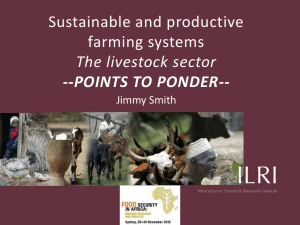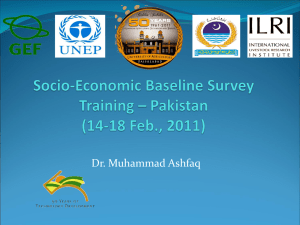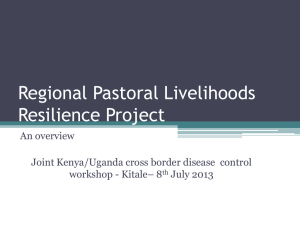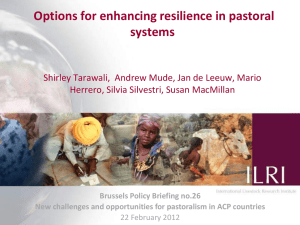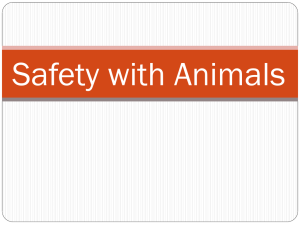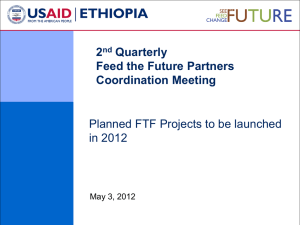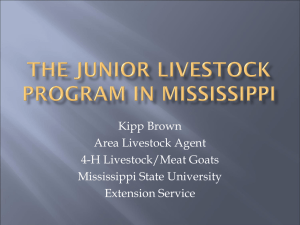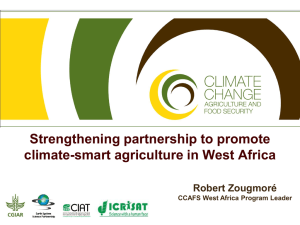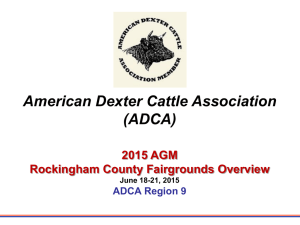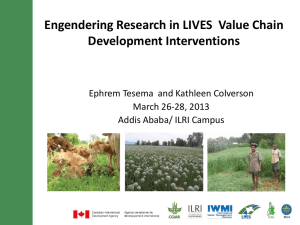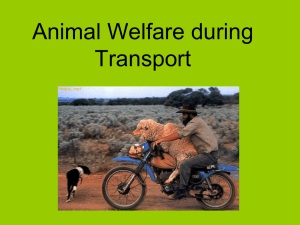Enhance livelihood in Pastoral setting
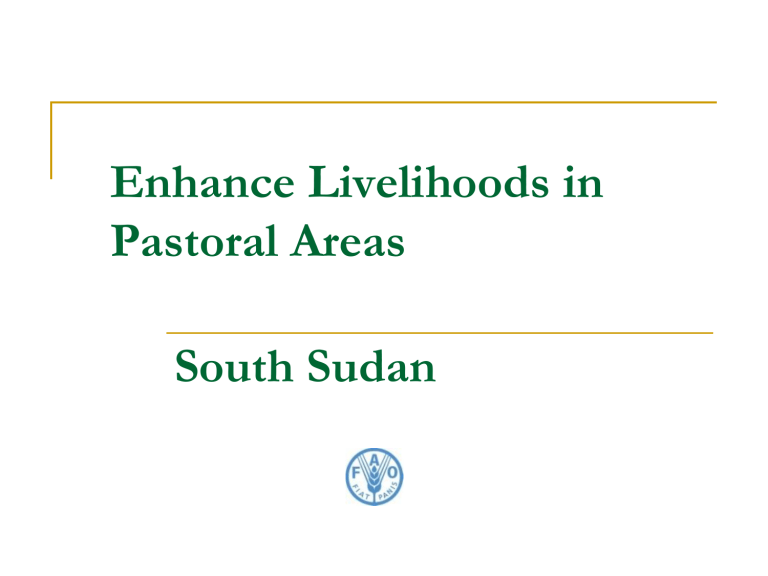
Enhance Livelihoods in
Pastoral Areas
South Sudan
Pastoral systems are economically viable but fragile as they manage a fragile environment
M a n a g e m e n t
Based on risk management
Spatial management which needs to maintain mobility as best way to utilize resources
Accumulation of capital only in livestock assets (increase the risk and diminish it at the same time)
Need to maintain a minimum herd size to face future risk and face social obligations
Strategic sale to get cash in return to purchase food, services, items, social obligations
Compromise between the need of cash and the need of keeping the animal as it represent a productive/reproductive capital to recover after the crisis, contribute to stock building, expresses social status
The basic economic logic is that poorer pastoral households need to build herds before more commercially-orientated market engagement becomes feasible.
This behavior does not reflect a fixation with acquiring livestock for reasons of social status only, but, is a rationale economic strategy given the vulnerability context, and the high economic returns from livestock relative to other economic opportunities in these areas
Pastoral systems are under threat therefore livelihood and food
security are under threat too
Diminishing natural resources, grazing patterns and corridors progressive land sequestration
Erosive impact of livestock diseases
Insufficient market access and declining terms of trade, commodities price steadily increasing
Water scarcity,
Insecurity, conflicts, cattle rustling
Little investment to enhance pastoral production system and alternative livelihood
.
Any of the factors undermining pastoral livelihood consequently put at risk the capacity pastoralist have to produce or purchase food
South Sudan, livestock snapshot
11.7 million cattle, 12.4 million goats and 12.1 million sheep, this amounts to the sixth largest livestock herd in Africa with an asset value roughly estimated at SDG 7 billion.
More than 85% of all households in Southern Sudan are livestock producers/keepers
Estimated number of 950,000 livestock keepers engaged in pastoralism and agro-pastoralism who are considered as the main livestock keepers
In comparison with the relatively low human population this places
Southern Sudan as the country with the highest livestock per capita ratio in Africa with a calculated average number of livestock to be 25 per household
South Sudan on the edge
Sub-Sahara
Increase herd size to:
10%- 3%
1. capitalize
(environmental stress increases risk)
2. sell (terms of trade are progressively deteriorating)
7%-14%
South Sudan
20-40%-
10-15 %
< 4%
Southern Sudan could be losing more than 1 million cattle (both young and mature) and 3 million shoats annually through death, over and above the tolerable levels
Commercial off-take Mortality Herd size Annual growth
Smaller livestock keepers are less resilient
< 50
> 200
50 - 200
20-40%-
10-15 %
PP Pastoral policies
( IGAD -CPF)
Animal health services
X %
Cash transfer
5%
20%
75%
< 4%
Marketing interventions
Productive infrastructures
Y %
“”as the recurrence of droughts heightens and pastoralists gradually embrace the cash economy, pastoralists are increasingly availing their animals to markets” Ekuam, CEWARN-IGAD, ISS
OLS – FAO \ GREP
Rinderpest eradicated
After
At least 8 diseases to control
Supervised by multi-disciplinary teams and be part of a multidisciplinary team at cattle camp trough Cattle camp initiatives of:
2000 trained 400-800 active
• Embedded in the
Community
• Trained for detection
• Supported by Cost recovery system
• Donor/Agency support
• Global-Regional
Commitment
• Sustainability never addressed
• No involvement of the private sector
• Huge drop-off
• Deployment scheme with higher level professional network established
• Spatial distribution rather than quantitative criteria
• Engagement of the private sector, veterinary drugs, pharmacies
• Extended knowledge toward production, market, IEWS and
LEWS
•One health discipline (OH platform) and nutrition
•Education
•Indigenous early warning system (FEWSNET)
•Livestock early warning system (GL-CRSP*)
•Conflict early warning and monitor system (CEWARN-IGAD**)
•Support to cattle rustling prevention initiatives (IGAD-EAPCCO-ISS –
Mifugo Project***) through LITS.
•Community awareness and monitoring (KAP)
•Agents in DRR and DRM
Community based animal health workers CBAHWs, South Sudan
Programme Focus
Bridging the gap between emergency relief and development assistance,
Establish viable pastoralist and alternative livelihoods *,
Enhancement of livelihoods options to reduce vulnerability and destitution in pastoral regions,
Improving livestock production and marketing,
Improving natural resource management,
Strengthening civil governance and conflict mitigation,
Promoting local, national, regional and international policies beneficial to pastoral areas
• In considerations regarding alternative sources of income a distinction should be made between:
alternative livelihoods strategies (e.g., exit),
complementary livelihood strategies (e.g., charcoal production, handicrafts) and
enhanced (livestock-centered) livelihood strategies (i.e. market integration, dairy products).

